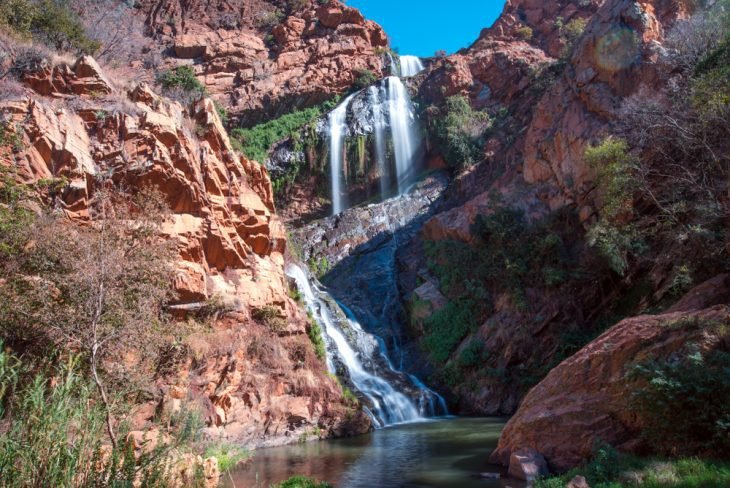Getting My Johannesburg North Attractions To Work
Getting My Johannesburg North Attractions To Work
Blog Article
The 3-Minute Rule for Johannesburg North Attractions
Table of Contents10 Easy Facts About Johannesburg North Attractions ExplainedJohannesburg North Attractions for DummiesThe Best Strategy To Use For Johannesburg North AttractionsOur Johannesburg North Attractions DiariesThe 7-Minute Rule for Johannesburg North AttractionsAbout Johannesburg North Attractions
The city expanded on the side of the Witwatersrand Main Reef, a subterranean stratum of gold-bearing quartz-silica empire that arcs for hundreds of miles under the Highveld - Johannesburg North attractions. Many of the gold mines in the city ceased operation in the 1970s, yet in its day the Witwatersrand gold industry accounted for even more than 40 percent of the world's yearly gold manufacturing.Johannesburg has a temperate environment. The city enjoys concerning 8 hours of sunlight per day in both winter season and summertime.
What rainfall the city receives falls virtually solely in the summer months, usually in amazing late-afternoon electrical tornados., where numerous citizens still rely on coal for gas.

Indicators on Johannesburg North Attractions You Need To Know
The equilibrium of the city is occupied by whites. Holiday accommodation varies in personality and top quality.
Physical growth, although rather restricted by transportation, proceeded swiftly as immigration to South Africa, and Johannesburg particularly, raised dramatically. This trouble was resolved in the 1930s when the auto was introduced in mass manufacturing to South Africa. Vehicles were, generally, constrained to the rich, and allowed them to relocate to the north of the city and commute into the centre.
Most bad residential areas were combined, with inadequate blacks and whites cohabiting, although the rich suburban areas were normally booked for whites. This transformed with the election of the National Party in the 1948 elections, who began to formalise the system called discrimination. Discrimination formally assigned which suburban areas each race might stay in under the Team Locations Act.
The previous system of eleven numbered regions was reorganised in 2006. Marshalltown, as seen from the top of the Carlton Centre. The M1 and M2 run behind the structures, and the southerly residential areas expand past the freeway limit. The inner city of Johannesburg lies within the city's Area F. The number of people living in the internal city on an informal basis is unidentified, as many are prohibited immigrants. The unemployment, education and learning, and age accounts of the area are all unidentified, due to the difficulty of getting trustworthy info concerning the area.
Examine This Report about Johannesburg North Attractions
Centred on the CBD, the region consists of the suburban areas of Yeoville, Bellevue, Troyeville, Jeppestown, and Berea to the eastern. To the west it spreads to Pageview (Johannesburg North attractions) and Fordsburg. There are little industrial parks to the south, such as City West-Denver and Benrose. Around 800,000 travelers go through the internal city everyday, and it operates as a local shopping node for site visitors from the southern residential areas. Yeoville and Bellevue have a mix of apartment and single property units on small whole lots. The area lies on a hilly divide that runs from eastern to west. The most conspicuous geographical feature is Observatory Ridge, which is named for the huge observatory located on it. The entertainment rooms are no much longer utilized, as a result of protection issues.

Johannesburg North Attractions for Dummies
R. Tambo International Airport). The eastern suburban areas are several their website of the oldest areas of Johannesburg, there are large neighborhoods of Jewish and various other European backgrounds, most of the population is English speaking. There are 3 golf programs as well as a number of secured ridges with viewsites. There are a number of strong and up-market enjoyment and purchasing locations in the east such as the Eastgate Shopping Center and the Greenstone shopping center.
Originally developed to house male migrant employees, several have been enhanced as dwellings for couples and family members. The suburban area was not historically allowed to produce employment centres within the area, so virtually all of its residents are travelers to other parts of the city.
Some Known Details About Johannesburg North Attractions
The N1 Western Bypass links the north suburban areas with the north-western these details residential areas. The houses in the north residential areas are mostly official, without any significant areas of informal real estate, or housing that lacks a permanent structure. look what i found This is a recognized location, there is a fad of land usage adjustment from residential to commercial, particularly along primary arterial roads and around recognized nodes.
The area is well linked to roadway networks, especially along the north-south axis developed by the M1 and N1. Roadways to the east and west are less well developed, as there are no freeways taking a trip because direction. In the direction of the north border of the city, the thickness of growth lowers, leaving big locations of primitive land around Midrand.
The Main Principles Of Johannesburg North Attractions
, which is situated on a hill ignoring the inner city and Hillbrow.
Report this page